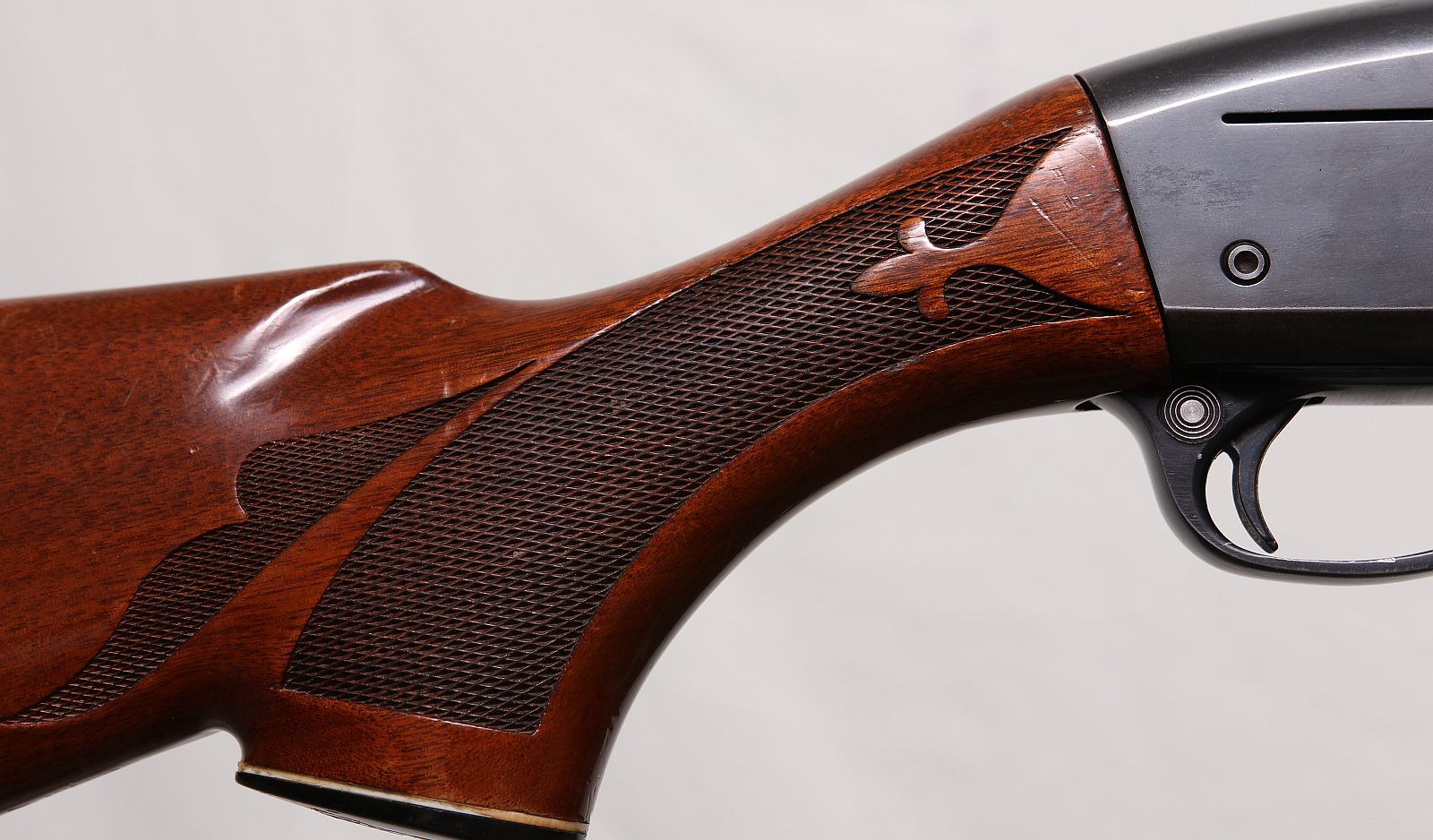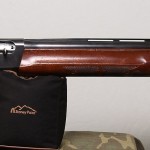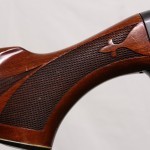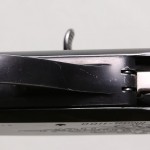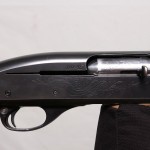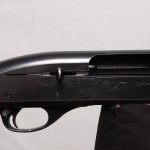The Remington 1100 is an older, gas-operated, semi-automatic shotgun. Even though the design is a bit outdated, it’s still in use today and there are TONS of used ones out there. Produced since 1963, the 1100 is well known for helping to reduce recoil due to its gas-operated action, and for its reliability. . .most of the time. If you need parts for your Rem 1100, check out Brownells.
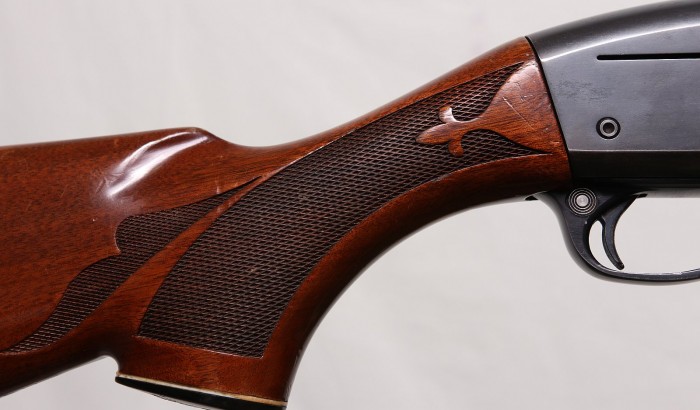
Video Review
Build Quality
This isn’t a fair comparison to new Remingtons, but I have 2 1100’s: a 63-68 2 3/4″ (not sure, as their lettering code wasn’t in practice during that time period), and a 3″ Magnum from 1974. Both of these shotguns have been hunted very hard, and lost most of their finish wherever parts moved or metal was handled frequently. The stocks on these older versions have OK grain and better checkering than normal bargain-priced shotguns. There’s also engraving on the bolt and receiver classing things up a bit. The materials available back then for buttstocks have completely deteriorated, but that’s hardly Remington’s fault. New buttpads are very easily installed, as the 1100 uses a very common Remington buttpad size.
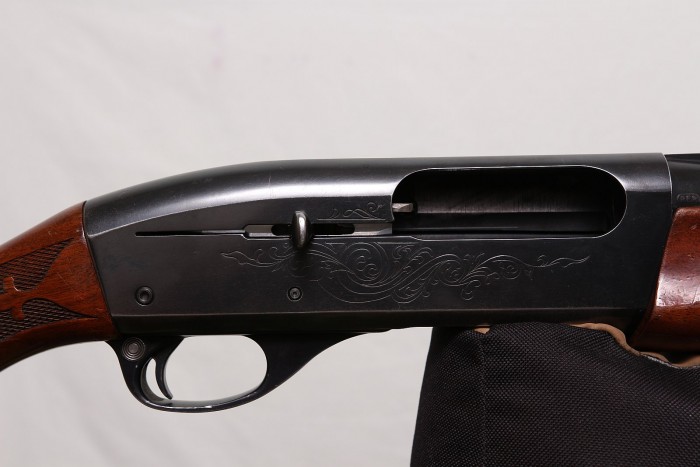
Reliability
Experiences vary on reliability. The 1100 relies on a rubber o-ring at the front of the gas system and that o-ring can break down with age, use, and abuse. Some people find their 1100’s run like a top and use their O-rings for decades, whereas others have issues unless they keep their o-rings in great shape. Because there is no way to moderate how much gas gets into the system, you can’t setup the system to work well with both low-powered shotshells, and high powered ones, so the lowest power target loads may not cycle your action.
O-Rings for the 1100 are pretty cheap, but they’re also supposed to work with a #21 Viton o-ring if you can’t wait for the Remington version in the mail.
1100’s are offered in 2 3/4 version as well as 3″ magnum options and here’s where a semi-automatic like the 1100 loses a bit of versatility: they’re generally setup to work well with 1 power of shell. While an 870, or any other pump action shotgun will happily blast light and heavy shells alike, semi-automatic shotguns like the 1100 work best with one power factor of shell. These days, the 1100’s sold by Remington are built for 2 3/4, except the G3. You should be looking at the Versa-Max if you want a Remington semi-auto shotgun that can take different lengths of shells. You can gain versatility with the 1100 by swapping barrels, but who wants to buy or have extra barrels hanging around if a single shotgun with a single barrel can do it all?

Usability
The Remington Model 1100 uses the same crossbolt safety as the 870, and a small side-charging handle.
Loading shells is somewhat slowed because of a little silver tab that unlocks the loading gate. Brownells sells an “Easyloader” that replaces the little silver tab with a big ramp that’s a lot easier to hit. The silver locking tab really does suck compared with a standard loading gate, so I’d replace it if you care at all about reloading quickly and easily.
The advantage to having the bolt hold open on that last shot is that you could potentially throw a shell directly into the side port, hit the release and have a hot round in the chamber really quickly.
Without any tube extensions, the 1100’s I have will hold (4) 2 3/4″ shells in the tube and 1 in the chamber. There are lots of extensions available if you need more.
The 1100 should be cleaned a bit more often compared with more modern shotguns as the gas system collects crud faster. I’ve found that in and around where the gas ports meet the tube collects the most carbon and crud.
Disassembling the 1100 is easy for the first bit: pulling off the barrel and stock only requires that you pull back the bolt and unscrew the magazine cap and have the bolt locked back. This is all you have to do most of the time, as this exposes the gas system, o-ring, and cycling gas parts that will get cruddy after shooting a lot or shooting dirty ammo. The way parts are mounted inside the receiver is decidedly old tech, with circlips, pins, springs, and levers somewhat exposed inside the receiver. It can also be difficult to clean the inside of the receiver, compared with more modern semi automatic firearms. Pipe cleaners really help get into the nooks and crannies in the receiver that can be impossible to reach.
Hunting
Hunting with an 1100 is extremely natural, at least for me. The stock is . . .perfect and will come up naturally for anyone used to hunting with 870’s. I don’t know if that’s because the stock is a great design, or if I’ve just spent so many hours hunting with similar stocks that I’ve got used to it, but it feels as comfortable as a favorite old t-shirt.
The crossbolt safety clicks, which might scare game at close range, so there’s that. The rest of the 1100 is extremely simple, with nothing else to get in the way of a good hunt. I run my shotguns without slings to make for an easier exit from blinds, but you could get a magazine cap sling point and screw another into the buttstock if you prefer. The 1100 is somewhat heavier than some newer shotguns, but the weight also helps make it a softer shooter.
If you want to hunt deer with your 1100, you may want to pick up a rifled barrel with sights(Remington #29570) or a cantilevered scope base (Remington #26595), if you can find one. That way, you can use sabot slugs for more accuracy and better ballistics. You can always use a regular slug and smooth barrel if you’re going to be in closer but the sabot rounds through a rifled barrel can be quite a bit more accurate.
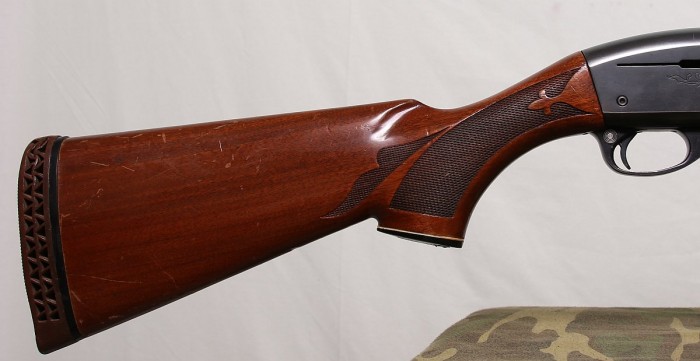
Trap/Skeet/Sporting Clays
A used Remington 1100 is an excellent choice for clay pigeon practice or competition for the budget. Recoil is somewhat lower due to the gas system and lower recoil really helps when you’re firing many boxes of shotshells in a day. Used Remington 1100’s are a reasonable way to get into trap/skeet shooting with a semi-automatic. It’s easy to blow $2k+ on a really nice gun, but a used 1100 can get you started without breaking the bank.
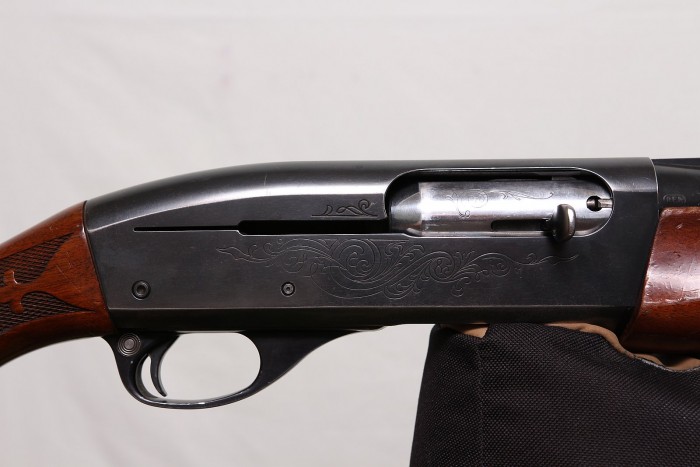
Remington 1100 for 3-Gun Competition
Semi-automatic, tube-fed shotguns can be pretty pricey but used 1100’s are again a very reasonably priced option. With an easy loader and shotshell carrier, it’s not bad for the price. After that, you may want to consider:
- Larger bolt handle
- Magazine Tube extension (more for American readers, as we’re limited to 5 rounds for semi-auto centerfire rifles in Canada)
- Oversized safety
One of my buddies runs an old Remington 1100 in 3-gun and doesn’t give up much by running such an old gun at all. You might also want to check out NicTaylor’s take on using the Rem 1100 for competition.
Overall
Even though the design on this shotgun is ancient, it is no slouch in use and you’re not giving up much to the newer shotguns. If you have a load that works for your 1100 and don’t need the versatility of modern shotgun designs, you’re not missing out on much for newer tech. Keep a few #21 o-rings handy and you’re good to go!
